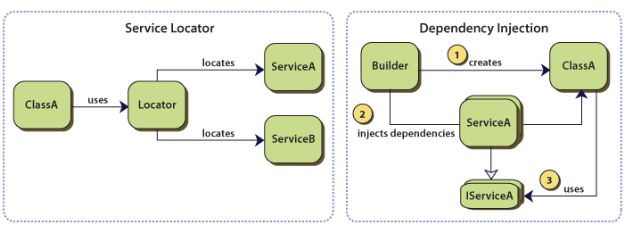What is
Spring?
Spring is
an open source, lightweight, application framework that is intended to help
structure entire applications in a consistent manner, pulling together best of
breed single-tier frameworks in a coherent architecture
Spring
provides us below features.
- Complexity of solution
- Timeline
- Maintainability
- Familiarity with framework
- Community and Documentation
- Framework Licensing
Spring
Architecture Diagram
- IoC Container
- Aspect-Oriented Programming
Framework (AOP)
- Data access abstraction and
JDBC simplifications
- Transaction Management
- MVC web framework
- Simplification for working
with J2EE APIs such as JNDI, JTA, etc.
- Lightweight remoting, JMS
support, JMX support
- Support for a comprehensive
testing strategy for application developers
Inversion
of Control (IoC)
- The Hollywood Principle,
“Don’t call us, we’ll call you.” IoC can be thought of in terms of what
distinguishes a framework from library.
- A Library performs some work
when called and returns to caller. Framework encapsulates some abstract
design incorporated with behavior but to use you must incorporate you
unique behavior via call backs or sub-classing.
- IoC is a principle that is
used to wire an application together,how dependencies or object graphs are
created
To use
Spring Dependency
Injection
all you need is…
- POJO with correct
constructor (or setter)
- Spring bean defined in
spring-config.xml
- Access the Bean through the
Spring context bean factory
POJOs
- Constructor
- Setter
Declarative
Dependency Injection with Spring Beans
- Constructor Injection
- Setter Injection
- Lookup Method Injection
Bean
Factory Lookup
SomeClass
instance = (SomeClass) context.getBean(“beanName”);
Where
context is an implementation of
org.springframework.beans.factory.BeanFactory
Spring
Bean Lookup Factory
The
Factory Pattern: one object is responsible for creating and maintaining the
lifecycle of another object. The lifecycle of Spring Beans (singleton) is
controlled by the Bean Factory.
Spring
AOP
Aspect-Oriented
Programming (AOP) complements OOP by providing another way of thinking about
program structure. While OO decomposes applications into a hierarchy of
objects, AOP decomposes programs into aspects or concerns. This enables
modularization of concerns such as transaction management that would otherwise
cut across multiple objects. (Such concerns are often termed crosscutting
concerns.)
How does
Spring enable and make use of AOP
To provide declarative enterprise services, especially as a replacement
for EJB declarative services. The most important such service is declarative
transaction management, which builds on spring’s transaction abstraction. To
allow users to implement custom aspects, complementing their use of OOP with
AOP.





No comments:
Post a Comment